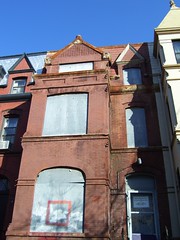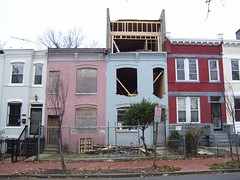I have something. It is long and if you have time I’d like you to read it and give your thoughts. I’m leaving off the date and the source so I can ask you the following questions:
When do you think this was written? What year, what decade? Language will give a clue.
After reading the following passage, how do you see DC’s housing problem?
Washington’s Problem (select part of report sumbitted to govt body) by John Nolen (govt employee):
__________’s long study of the housing problem in Washington has revealed without question that the inhabited alleys are not only the most serious part of the situation but are, to a great extent, the cause of a general housing problem in the sections of the city in which they are most predominant. Moreover, relative to other cities in the United States, the inhabited alleys of Washington are as serious from a social, health and public welfare point of view as are some of the slums in the industrial centers.
The general importance of the inhabited alley situation to the city as a whole lies in the social and economic blight that envelops many alley dwelling area. These areas have so depreciated that both white and colored population area moving away to the better neighborhoods. Although in the old city of Washington all but one section declined in total population during the last decade, and all sections declined in white population an average of 20%, in more than half of the old city the colored population increased, so that many section heretofore predominantly white have changed in the short period of ten years to predominately colored. This encroachment, especially in the northwest direction in areas that have always been white, has resulted in part from the depreciation of the neighborhoods normally occupied by colored residents of the better economic class. This shift in population over such a short period of time seriously affects property values and the use of existing school facilities, and raises many other municipal problems. The increase in vacancies in the blighted areas has brought pressure for changing the zoning of residential area to commercial in sections of the city where there is already an ample supply of commercial area. Moreover, a normal proportionate share of improvements to private property during the last eight or ten years has failed to go into the reconstruction of the deteriorated residential portions of the old city. There has been a relatively insignificant increase in assessed values affecting the tax income of the municipality from these areas. All of these forces, operating apparently to an increasing degree, have left areas of stagnation and blight, many of which are favorably situated for housing the lowest income groups in a manner conducive to the public welfare and an adequate return on private capital. Such enterprises, aside from their local benefit, should have a city-wide effect in stabilizing the character and value of neighborhoods.




